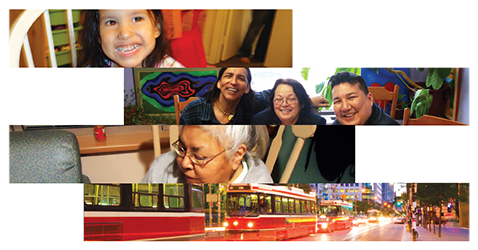As part of the traditional territory of the Mississauga of the New Credit, Toronto has a long history of being a place of Aboriginal hunting and fishing, social gathering, and trade. More recently as part of the larger national trend in Aboriginal urbanization, Aboriginal people have been moving to Toronto since the early 1950s. According to the 2006 Census, the Greater Toronto Area has the largest (31,910) Aboriginal population of any city in Ontario, comprising 13% of all Aboriginal people in Ontario. According to Aboriginal service providers however, Toronto’s Aboriginal population is presently estimated at 70,000 residents.1 In comparing Census data over time, we also see that the Aboriginal population has grown by 33% since 2001 and has more than doubled its size since the 1981 population count of 13,015.
Despite this history of Aboriginal people living in Toronto, there has been little systemic, in-depth research pertaining to this reality. The Toronto Aboriginal Research Project (TARP) has responded to this need and is the largest and most comprehensive study of Aboriginal people in Toronto ever conducted. With a sample of over 1,400 individuals, 14 topics studied and seven methodologies utilized, the TARP study provides an extensive picture of the current situation, successes, aspirations, and challenges facing Aboriginal people in the Greater Toronto Area (GTA). The TARP study is also unique in that it is a community-based research initiative that has been overseen from start to finish by the Toronto Aboriginal Support Services Council in collaboration with the TARP Research Steering Committee.
Several overarching themes that emerged from this work are: the persistence of widespread poverty and related social challenges in spite of improvements in education, employment, and income levels and a growing Aboriginal middle class, the pervasiveness of racism against Aboriginal people in Toronto as well as diverse forms of discrimination being expressed within the Aboriginal community itself, the challenges associated with Aboriginal community building, the importance of Aboriginal cultures and the presence of a vibrant Aboriginal arts scene in Toronto.
In spite of improvements in education and degrees of economic success for some members of the Toronto Aboriginal community and the existence of a network of social support agencies, many Aboriginal people struggle with poverty and meeting their basic needs for adequate housing, income and employment, and health. This reality of positive trends in community and social development existing within an overarching condition of poverty and inter-related social problems is reflected throughout all the topics of research. Moreover, the research has shown the existence of a diversity of Aboriginal social services agencies that are working hard to provide culturally-based supports to an increasing number of clients that are experiencing complex problems and multiple needs. The research has further found that improvements in education, employment, and income levels are contributing to a growing population of economically successful, or middle class Aboriginal people that are characterized by a stable social and economic way of life including: secure housing, high levels of education and a stable family life and who reside in neighbourhoods throughout the GTA.
Although not identified as a specific research priority, the problem of racism against Aboriginal people emerged as a finding in almost all of the research areas including men, women, Elders and seniors, the two-spirited population, the middle class, and within the law and justice system. As well, the research further pointed to the prevalence of various forms of internal discrimination being expressed within the Aboriginal community across the same research categories. Racism against Aboriginal people by non-Aboriginal people is most severely felt within the law and justice system where there is strong evidence of racial profiling, the undervaluing of Aboriginal victims, and the overcharging of Aboriginal offenders. As well, the research also revealed a significant amount of internal discrimination experienced by the middle class from other members of the Aboriginal community.
The challenges associated with the development of an Aboriginal community in Toronto also emerged as a larger theme. The TARP research pointed to the difficulties involved in bringing people together socially and politically who are living across all areas of the GTA and who are from culturally, politically, and economically diverse populations that include international Indigenous people and the newly Aboriginal ‘ethnically mobile’ population. A number of Aboriginal social service agencies have come together under the Toronto Aboriginal Social Services Council (TASSC) and are working to create a culturally-based Aboriginal social services community. However, some members of both the Aboriginal arts community and the emerging Aboriginal middle class do not feel included in the social services and are associating more with mainstream life in Toronto. The research has pointed to the many possible contributions that these groups can make to the social services community and the importance of working to broaden the possibilities of Aboriginal community life in Toronto.
The critical importance of Aboriginal cultures in Toronto also emerged as a key theme throughout this research. In addition to the work that Aboriginal social services organizations do in providing culturally-based programs and services and in their hosting of community feasts and cultural events, there is a thriving Aboriginal arts community in Toronto. The TARP research revealed Aboriginal arts in all corners of the city from visual art to performing theatre arts to film festivals. The arts community has grown from the efforts of many grassroots artists and patrons and there are a number of Aboriginal arts agencies that support Aboriginal artists and organize performances, productions, festivals and exhibits. Overall, a significant number of TARP respondents spoke to the important contributions that the Aboriginal arts community is making towards cultural continuity and revitalization in the city.
In terms of key demographic trends, Toronto’s Aboriginal population is younger than the non-Aboriginal population across all age categories with a large percentage of Aboriginal women heading single parent families. Anishnawbe and Status Indians are the most common cultural and legal categories and many Aboriginal people in Toronto are long-term residents that maintain links to their communities of origin. As well, many Aboriginal people live in a diversity of areas across the GTA, with some areas of high concentration of Aboriginal people living in lower-income neighbourhoods. Aboriginal people in Toronto have made significant educational advancements, with two-spirited people having the highest percentage of university graduate degrees. As well, there are a higher proportion of skilled Aboriginal professionals in Toronto than found in other urban centres in Ontario.

